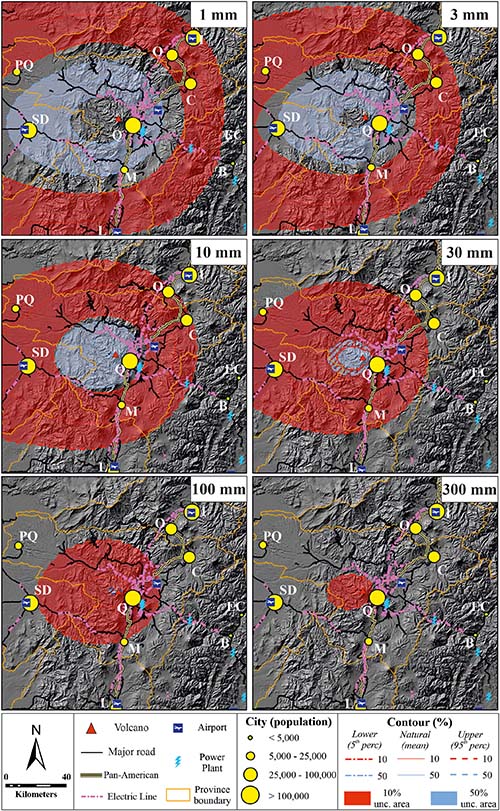Tephra fallout probabilistic hazard maps for Cotopaxi and Guagua Pichincha volcanoes (Ecuador) with uncertainty quantification

Tadini A., N. Azzaoui, O. Roche, P. Samaniego, B. Bernard, A. Bevilacqua, S. Hidalgo, A. Guillin, M. Gouhier (2022).
Geophysical Research: Solid Earth, 127, https://doi.org/10.1029/2021JB022780
Abstract
Tephra fallout hazard assessment is undertaken with probabilistic maps that rely on numerical models. Regarding maps production, the input parameters of the model (including atmospheric conditions), the physical approximations of the numerical simulations, and the probabilities of occurrence of different eruption types in specific time frames are among the most critical sources of uncertainty. We therefore present a tephra fallout hazard assessment study for two active volcanoes (Cotopaxi and Guagua Pichincha) in Ecuador. We utilize PLUME-MoM/HYSPLIT models, and a procedure for uncertainty quantification where: (a) the uncertainty on eruptive source parameters and eruption type occurrence is quantified through expert elicitation; (b) we implement a new procedure for correlations between the different parameters, and (c) we use correction coefficients to take into account the uncertainty of the numerical model. Maps of exceedance probability given a deposit thickness threshold, and thickness maps given a probability of exceedance, are produced (a) for two eruptive scenarios (sub-Plinian and Plinian) and (b) as a combination of these scenarios in case the next eruption will be sub-Plinian or Plinian. These maps are described according to the uncertainty distribution of eruption type occurrence probabilities, considering their 5th percentile, mean, and 95th percentile values. We finally present hazard curves describing exceeding probabilities in 10 sensitive sites within the city of Quito. Additional information includes the areal extent and the population potentially affected by different isolines of tephra accumulation. This work indicates that full uncertainty quantification helps in providing more robust scientific information, improving the hazard assessment reliability.


Devi effettuare l'accesso per postare un commento.